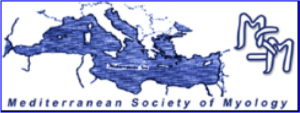Myofibrillar myopathies are a heterogeneous group of neuromuscular disorders characterized by degeneration of Z-disk, causing the disintegration of myofibrils. They may be caused by mutations in different genes, among these, the BAG3 gene (Bcl-2 associed-athanogene-3) encodes a multidomain protein that plays an important role in many cellular processes. We report the case of a 16-year-old male who at 4 years of age presented with a hypertrophic obstructive cardiomyopathy, then developed axonal sensory motor polyneuropathy, muscle weakness, rigid spine, severe kyphoscoliosis and respiratory failure. Muscle biopsy showed the typical hallmark of myofibrillar myopathy with abnormal cytoplasmic expression of multiple proteins. Ade novo heterozygous common mutation in the BAG3 gene with a c.626C > T (p.Pro209Leu) was discovered on NGS genetic analysis. Mutations in the BAG3 gene are causes of a severe and progressive condition and natural history data are important to be collected. An early diagnosis is critical for prognostic implications in cardiomyopathy and respiratory failure treatment.






